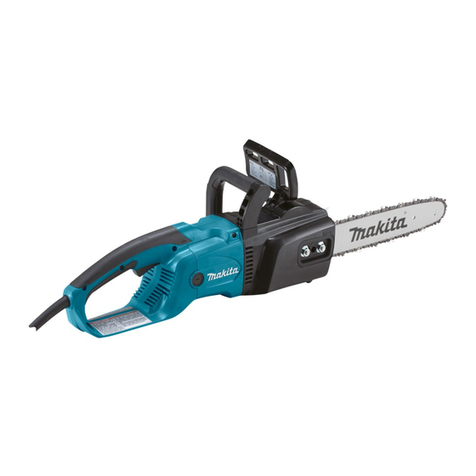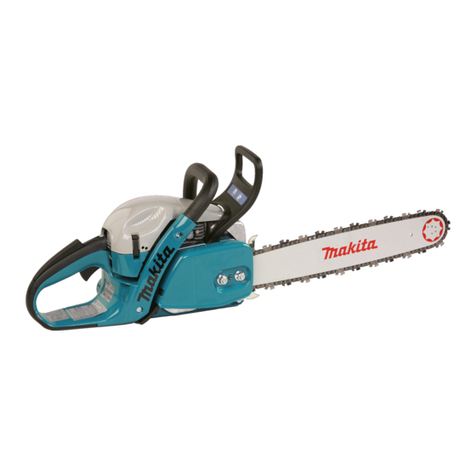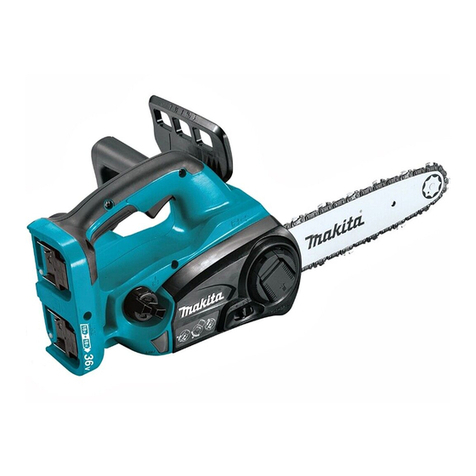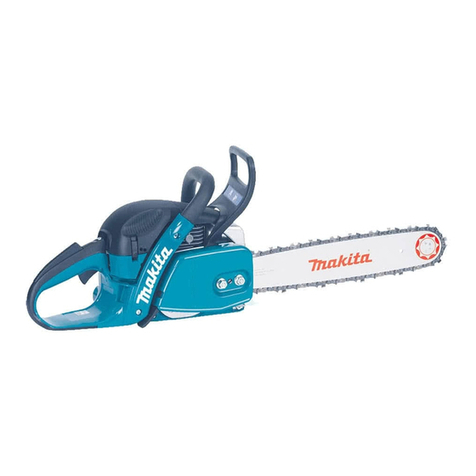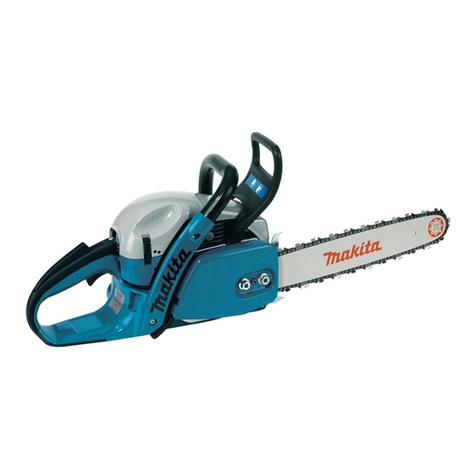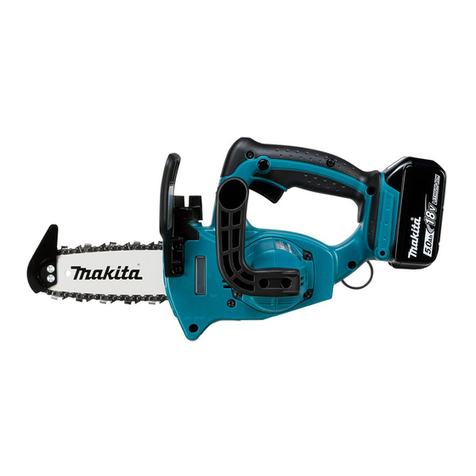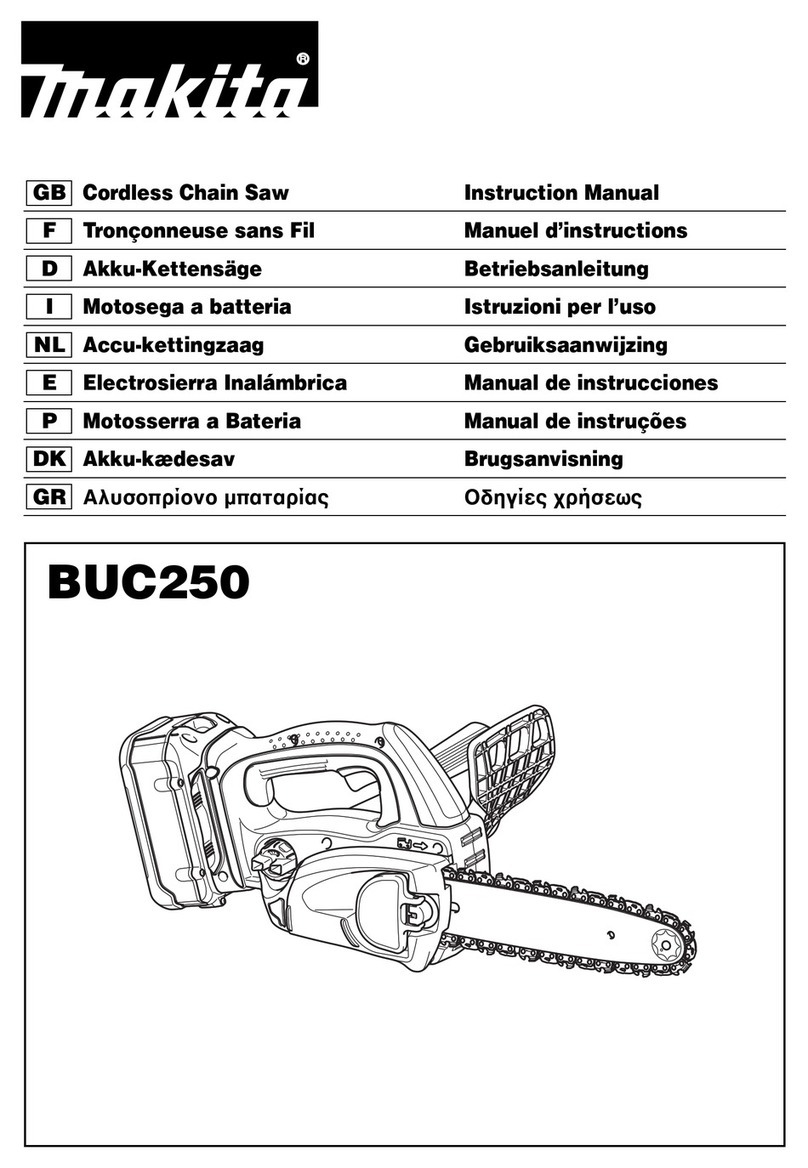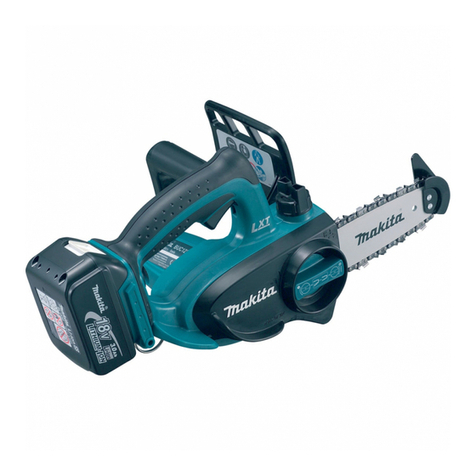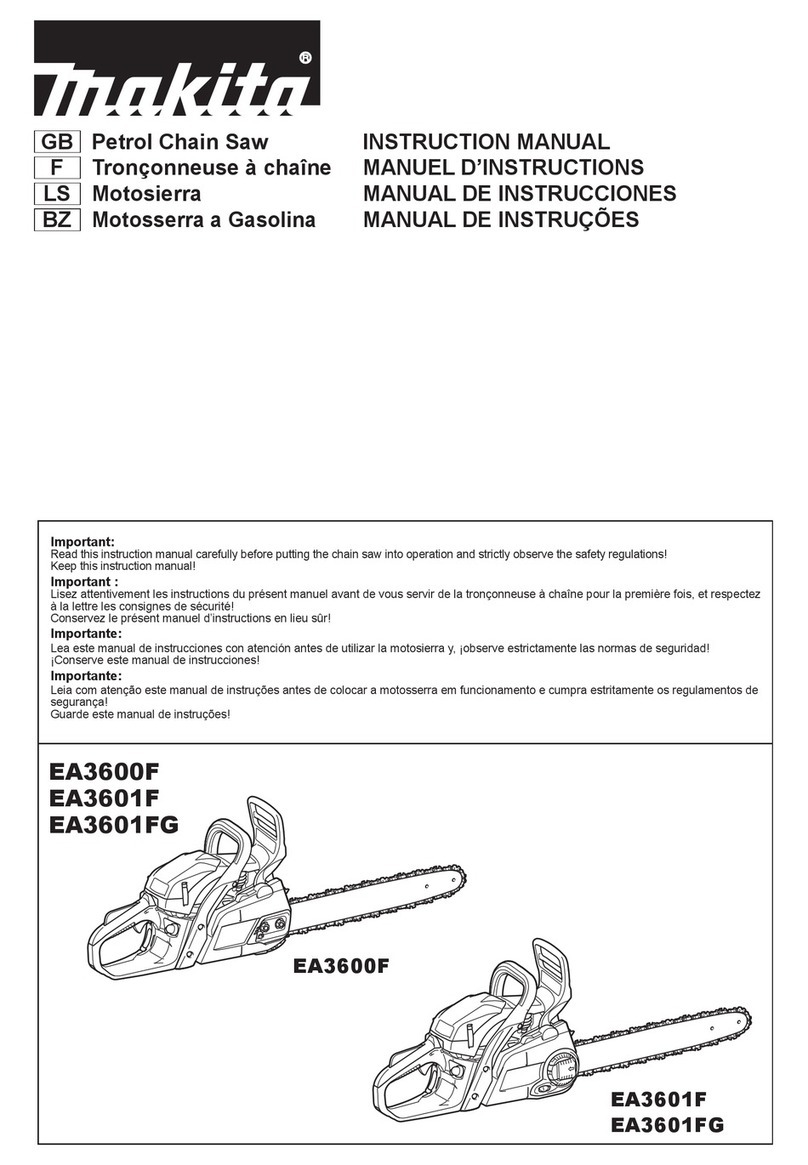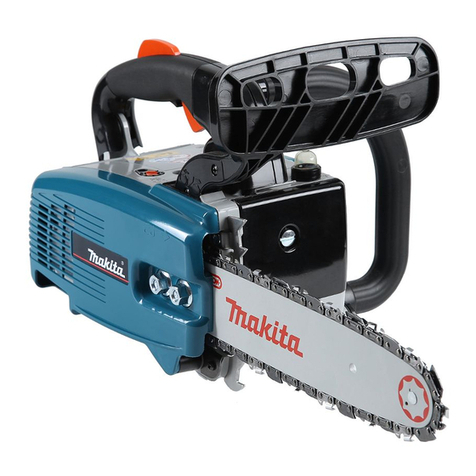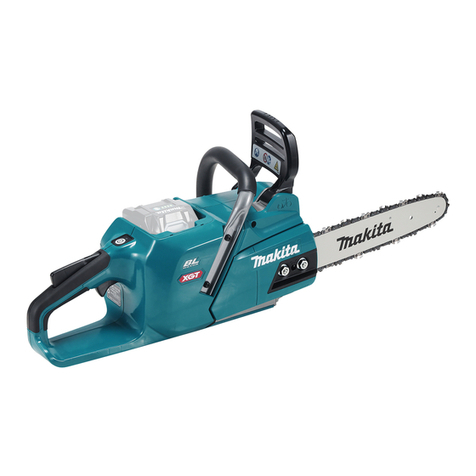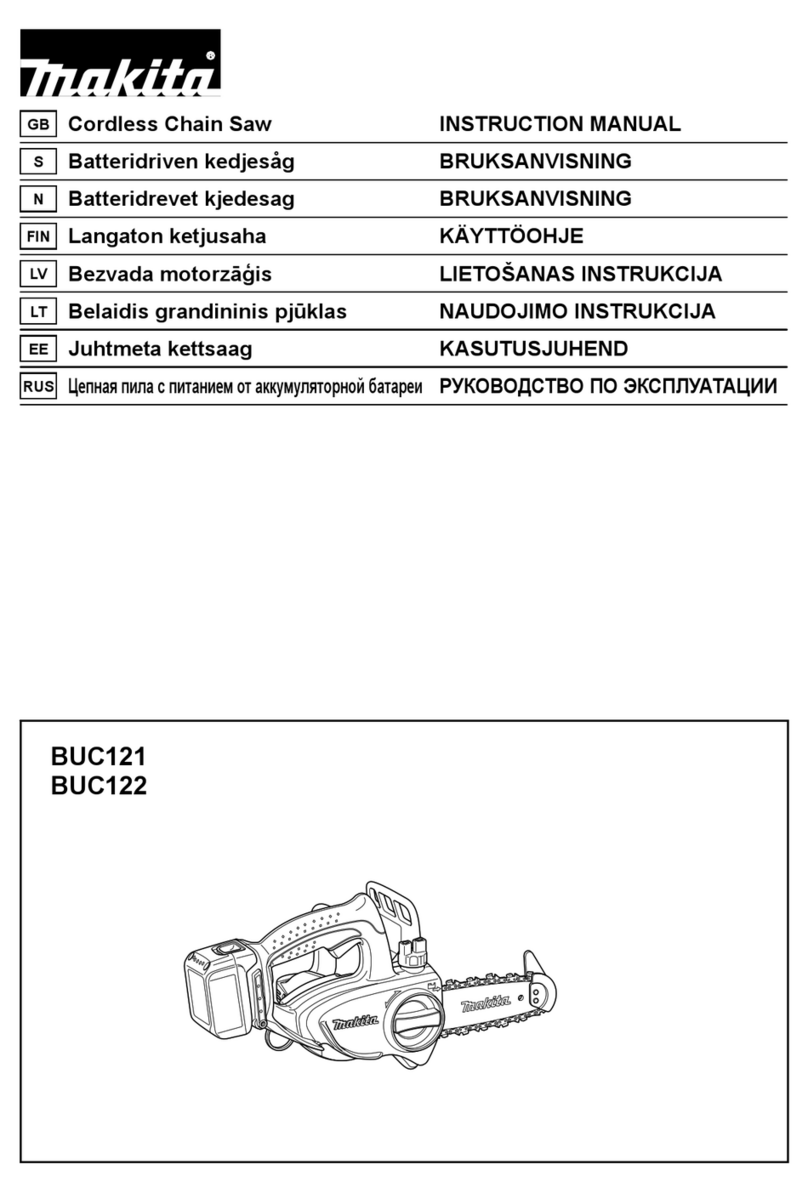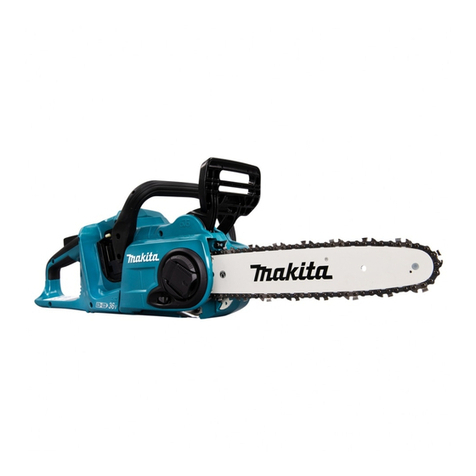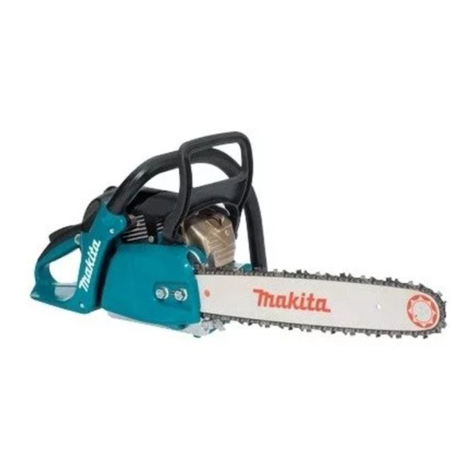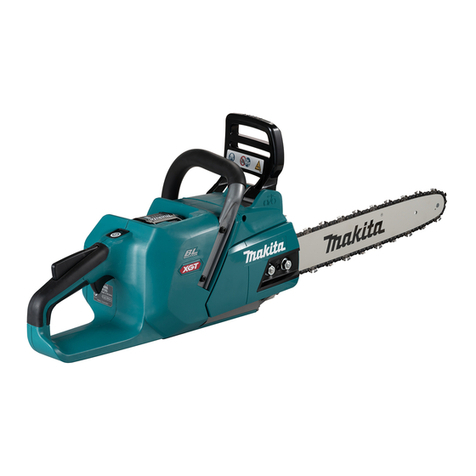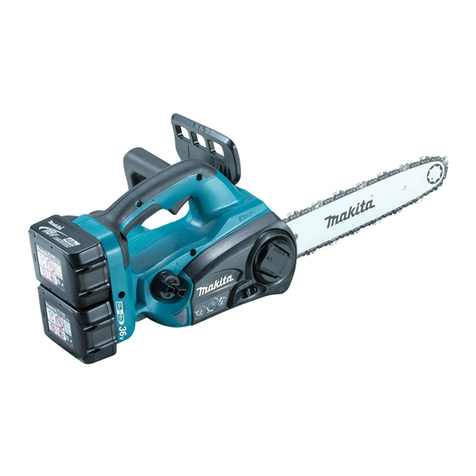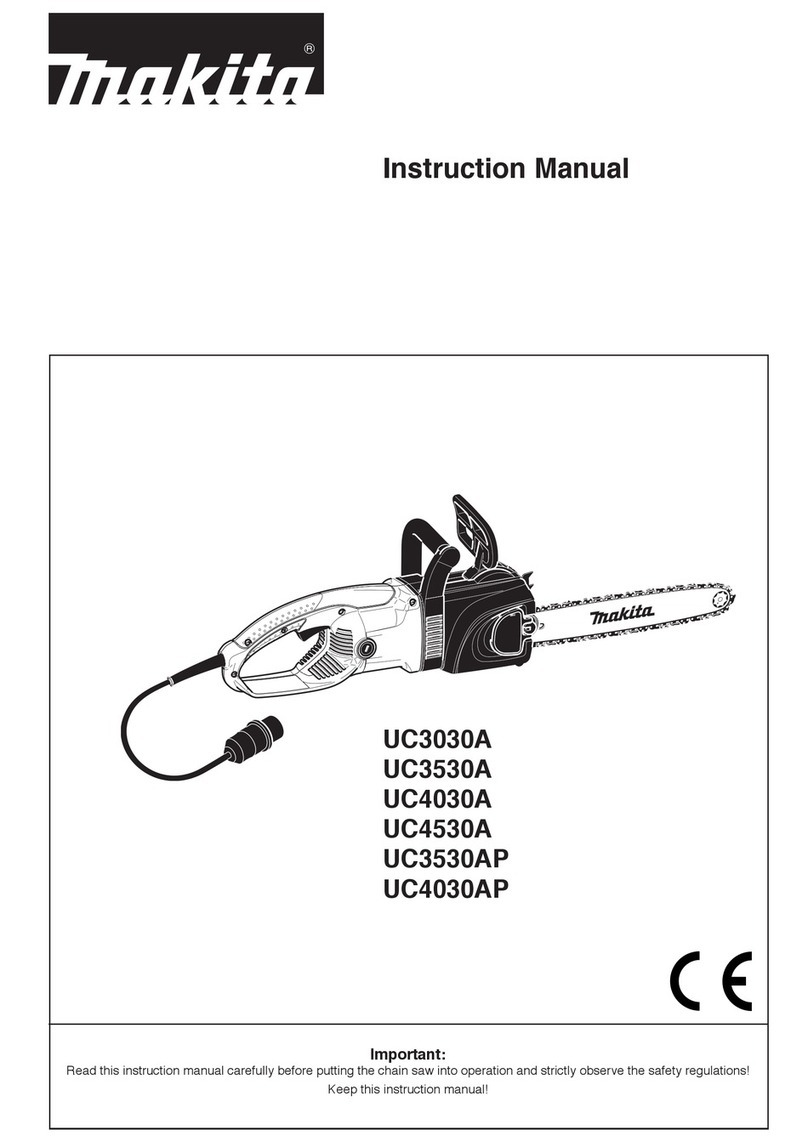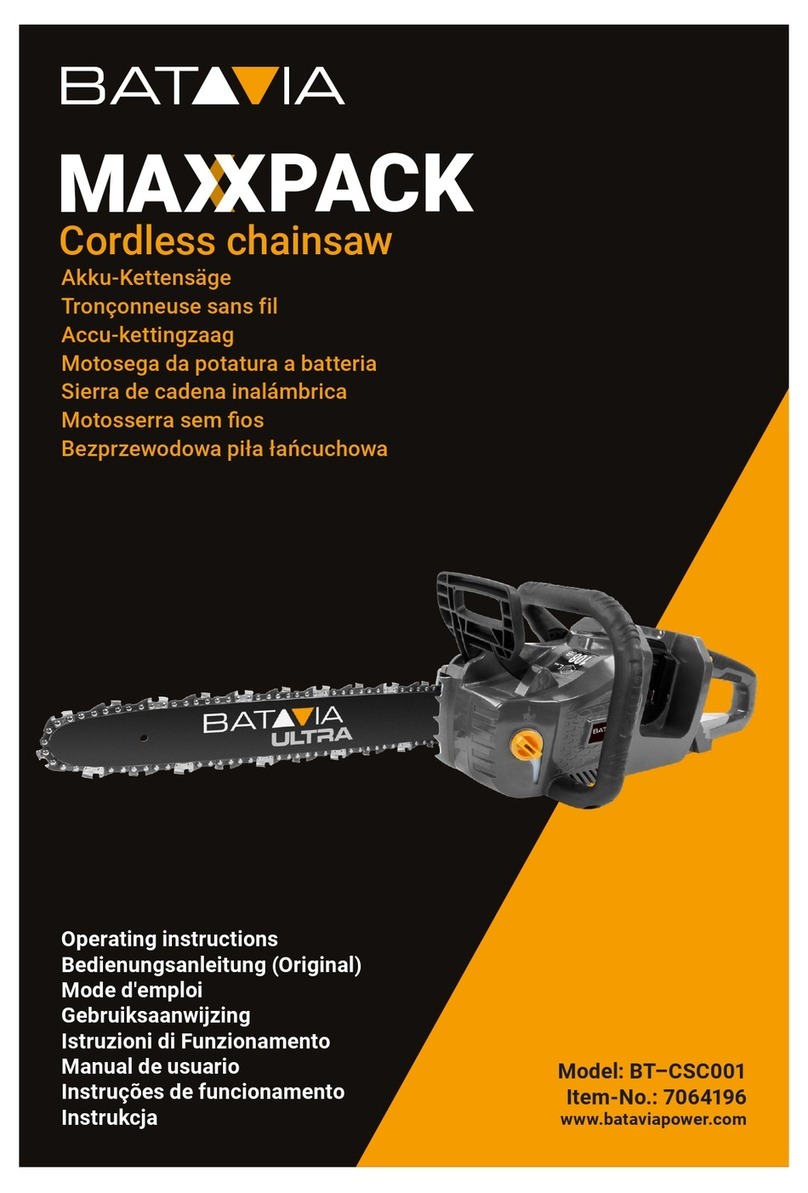
10 ENGLISH
Symbols
The followings show the symbols which may be used
for the equipment. Be sure that you understand their
meaning before use.
Read instruction manual.
Wear safety glasses.
Wear ear protection.
Wear a helmet, goggles and ear protection.
Use appropriate protection for foot-leg and
hand-arm.
This saw is to be used by properly trained
operators only.
Do not expose to moisture.
Maximum permissible cut length
Always use two hands when operating the
chain saw.
Beware of chain saw kickback and avoid
contact with bar tip.
Direction of chain travel
Li-ion
Only for EU countries
Due to the presence of hazardous com-
ponents in the equipment, waste electrical
and electronic equipment, accumulators
and batteries may have a negative impact
on the environment and human health.
Do not dispose of electrical and electronic
appliances or batteries with household waste!
In accordance with the European Directive
on waste electrical and electronic equip-
ment and on accumulators and batteries
and waste accumulators and batteries,
as well as their adaptation to national law,
waste electrical equipment, batteries and
accumulators should be stored separately
and delivered to a separate collection point
for municipal waste, operating in accor-
dance with the regulations on environmen-
tal protection.
This is indicated by the symbol of the
crossed-out wheeled bin placed on the
equipment.
Guaranteed sound power level according
to EU Outdoor Noise Directive.
Sound power level according to Australia
NSW Noise Control Regulation.
Intended use
The tool is intended for cutting branches and pruning
trees. It is also suitable for tree service.
Noise
The typical A-weighted noise level determined accord-
ing to EN62841-1 and EN ISO 11681-2 as applicable:
Model UC002G
Sound pressure level (LpA) : 93 dB (A)
Sound power level (LWA) : 101 dB (A)
Uncertainty (K) : 3 dB (A)
Model UC003G
Sound pressure level (LpA) : 93 dB(A)
Sound power level (LWA) : 101 dB (A)
Uncertainty (K) : 3 dB(A)
Model UC004G
Sound pressure level (LpA) : 93 dB(A)
Sound power level (LWA) : 101 dB (A)
Uncertainty (K) : 3 dB(A)
Model UC006G
Sound pressure level (LpA) : 91 dB(A)
Sound power level (LWA) : 99 dB (A)
Uncertainty (K) : 3 dB(A)
NOTE:
The declared noise emission value(s) has been
measured in accordance with a standard test method
and may be used for comparing one tool with another.
NOTE:
The declared noise emission value(s) may also
be used in a preliminary assessment of exposure.
WARNING: Wear ear protection.
WARNING:
The noise emission during actual
-
ue(s) depending on the ways in which the tool is used
especially what kind of workpiece is processed.
WARNING:
Be sure to identify safety measures
to protect the operator that are based on an estima-
tion of exposure in the actual conditions of use (tak-
ing account of all parts of the operating cycle such
it is running idle in addition to the trigger time).
Vibration
The vibration total value (tri-axial vector sum) determined
according to EN62841-1 and EN ISO 11681-2 as applicable:
Model UC002G
Work mode: cutting wood
Vibration emission (ah,W) : 5.0 m/s2
Uncertainty (K) : 1.5 m/s2
Model UC003G
Work mode: cutting wood
Vibration emission (ah,W) : 5.0 m/s2
Uncertainty (K) : 1.5 m/s2
Model UC004G
Work mode: cutting wood
Vibration emission (ah,W) : 5.0 m/s2
Uncertainty (K) : 1.5 m/s2
Model UC006G
Work mode: cutting wood
Vibration emission (ah,W) : 2.8 m/s2
Uncertainty (K) : 1.5 m/s2
